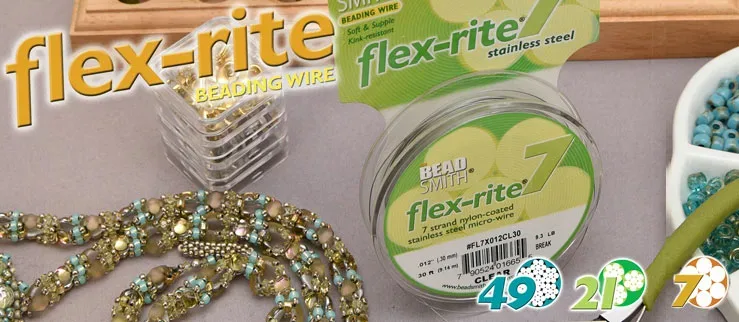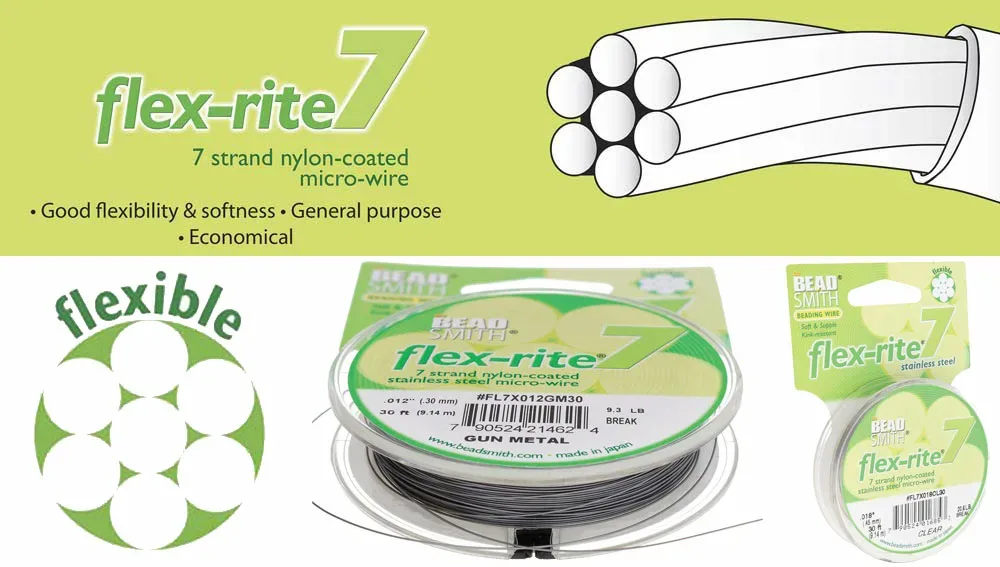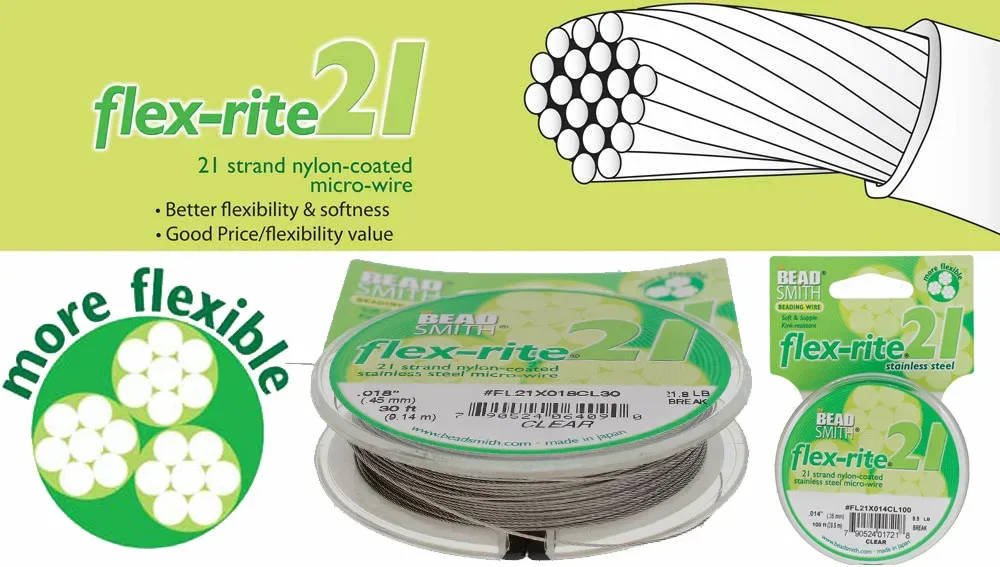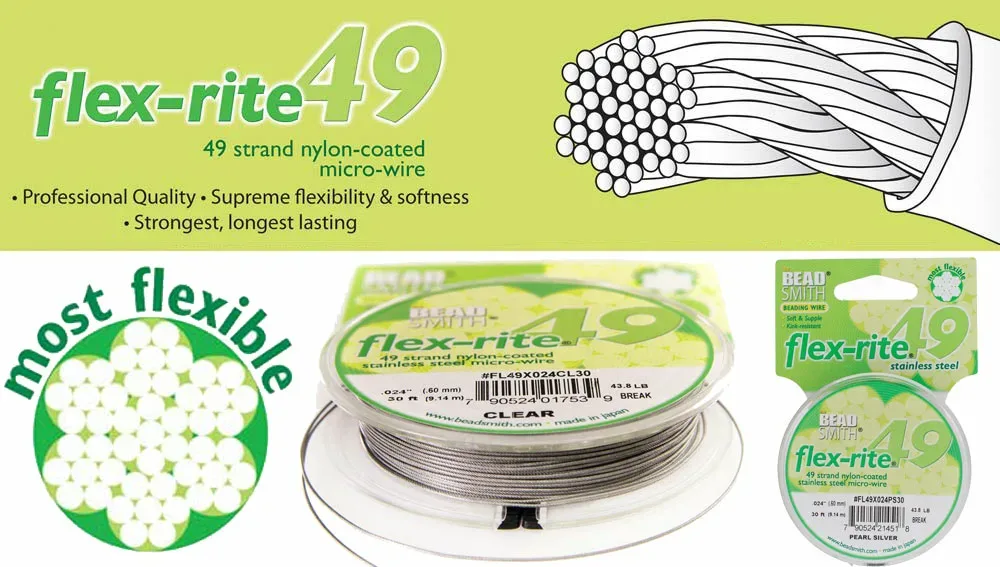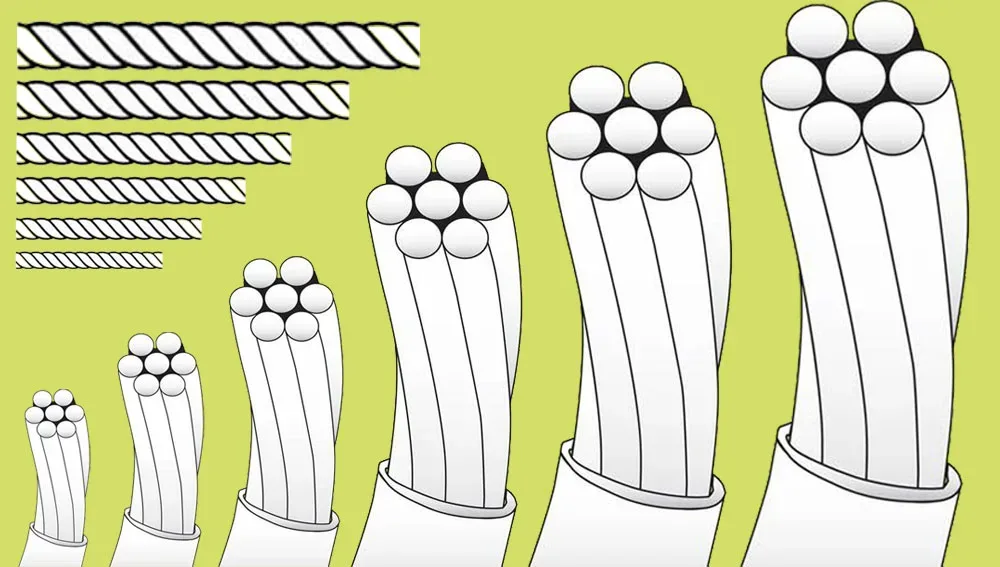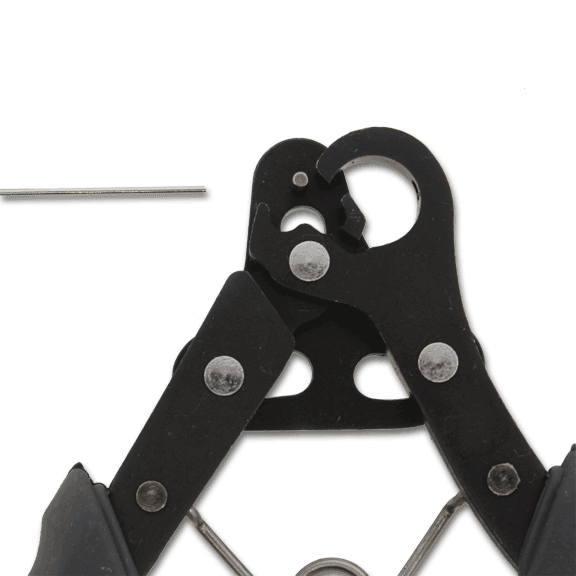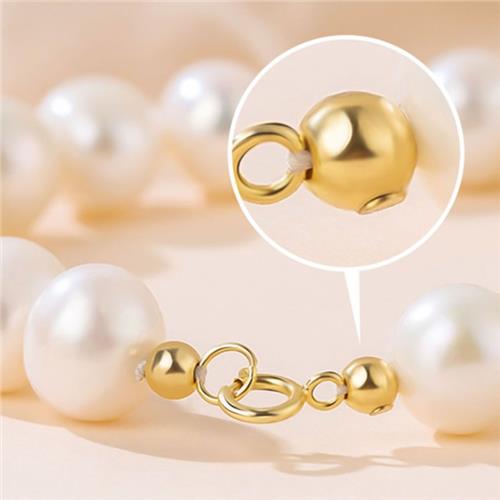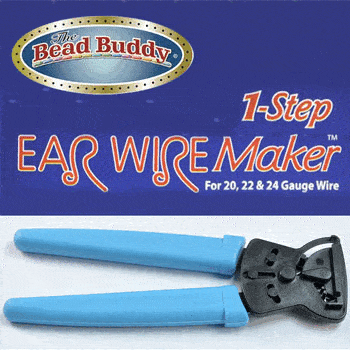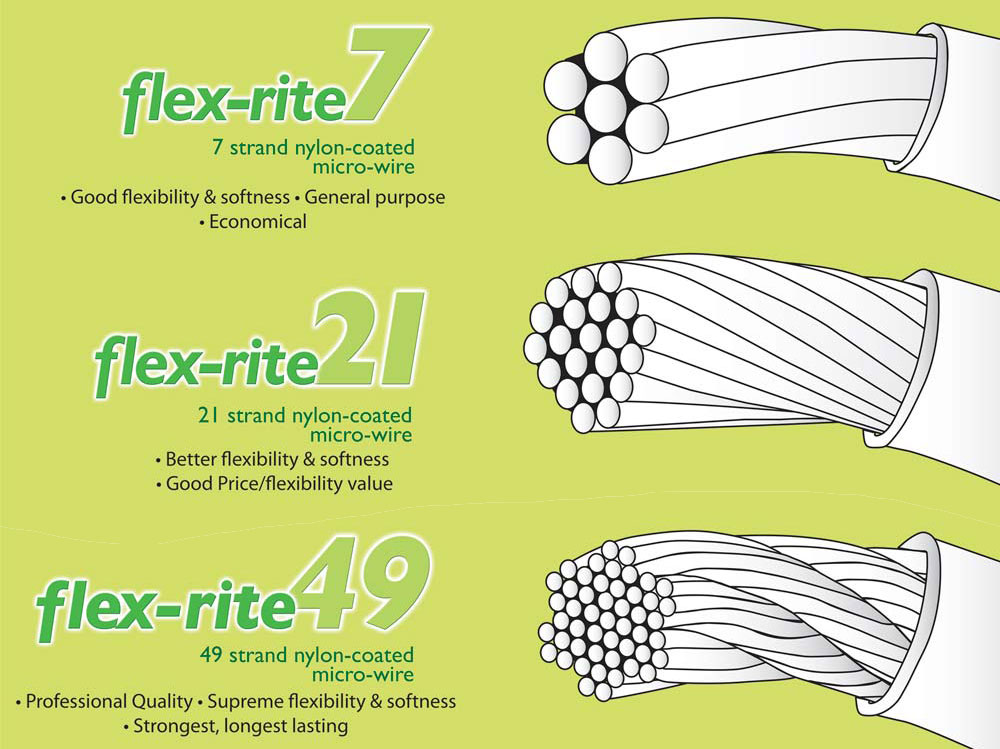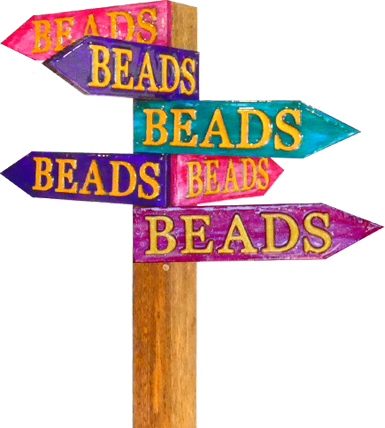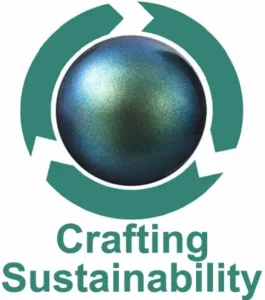Flex-Rite Beading Wire is a type of jewellery wire that is often used for stringing beads and making beaded jewellery. It is a flexible, multi-strand wire that is designed to be strong and durable, while also being easy to work with.
Flex-Rite Beading Wire is made up of several strands of fine stainless-steel wire that are twisted together to form a single, strong wire. This gives the wire flexibility and allows it to move and bend without breaking. The wire is then coated with a thin layer of nylon to protect the wire from wear and tear.
One of the benefits of Flex-Rite Beading Wire is that it comes in a variety of thicknesses and strengths, which makes it a versatile choice for different types of beading projects. Thicker wires can be used for heavier beads and jewellery designs, while thinner wires are more suitable for delicate or small beads, pearls, and fine jewellery.
Another benefit of Flex-Rite Beading Wire is that it is extremely easy to use and handle. It is also very strong and durable, so it can withstand the weight of heavy beads and the stress of regular wear.
Overall, Flex-Rite Beading Wire is a popular choice for beaders and jewellery makers because of its strength, flexibility, and versatility. Whether you are a beginner or an experienced beader, this wire can help you create beautiful and long-lasting jewellery designs.

Flex-Rite beading wire offers a variety of choices for creating professional beaded jewellery. Flex-Rite uses state of the art micro-wire technology to produce a wire that is strong, soft and flexible. Select from our versatile range of quality beading wires to suit all of your jewellery making needs.
The main difference between the 7, 21, and 49 strand beading wires is the number of individual strands of wire that are twisted together to create the beading wire.
The number of strands used in a beading wire affects its flexibility, strength, and overall performance. More strands typically mean greater strength, flexibility, and durability.
Ultimately, the choice between 7, 21, or 49-strand beading wire will depend on the weight and complexity of your beading project, as well as your personal preference and experience with using different types of beading wire.
7-strand beading wire is made up of 7 individual strands of wire twisted together. It’s the most cost-effective option, ideal for producing inexpensive jewellery such as basic necklaces and bracelets. If you’re making suncatchers, 7-strand is also a great option.
21-strand beading wire is made up of 21 individual strands of wire twisted together. It is the medium grade wire in the Flex-Rite range and is suitable for a wider range of beading projects. It’s the best value for creating professional quality jewellery. You will want to use this wire with pearls, gemstones, or more expensive glass beads. If you’re making quality jewellery for resale, you can be assured that 21-strand will meet your quality requirements.
49-strand beading wire is made up of 49 individual strands of wire twisted together. It is the strongest, most flexible and most kink resistant wire available, making it best suited for heavier and more complex beading projects that require extra strength and durability. is perfect for that special jewellery piece made with high quality crystals, pearls, or handmade glass beads. A gift for a friend or jewellery being sold at a premium price should be made on the best quality wire available, and this is definitely the best.
Flexibility: The 7-strand wire is very flexible, which makes it easy to work with and allows it to bend and move without breaking. This is especially important for beading projects that require intricate and delicate designs.
Kink resistance: The 7-strand wire is kink-resistant, which means it maintains its shape and doesn’t develop bends or creases that can weaken the wire over time. This makes it a durable choice for beaded jewellery that will see frequent use.
Strength: Although the 7-strand wire is the entry level Flex-Rite, it is still strong enough to support most types of beads and beading projects. It is a great choice for lightweight to medium-weight beading projects.
Versatility: The 7-strand wire is versatile and can be used for a wide range of beading projects, from simple stringing to more complex designs. It is also available in a variety of thicknesses, making it a wire that fits your project’s needs.
Cost-effective: The 7-strand wire is generally more affordable than higher strand count wires, making it a great choice for beginner beaders or those on a budget.
Flex Rite 7-Strand beading wire is a great choice for beading projects that require a balance of flexibility, strength, and affordability. While higher strand count wires may be stronger or more kink-resistant, the 7-strand wire offers a great balance of these qualities for most beading projects.
Flex Rite 21-strand beading wire also has several advantages over the other grades of beading wire:
Strength: With 21 individual strands twisted together, this wire is stronger than the 7-strand wire and can handle heavier beads and more complex beading projects.
Flexibility: It is more flexible than the 7-strand wire, making it easy to work with. For this reason it is a good choice for more intricate beading designs and where better drape is required.
Kink resistance: The 21-strand wire is more kink-resistant than the 7-strand wire, which means it can maintain its shape and durability over time, resisting kinks and deformation in shape and drape.
Versatility: Like the 7-strand wire, the 21-strand wire is available in a range of thicknesses, which makes it a versatile option for many types of beading projects.
Durability: The 21-strand wire is a durable choice that can withstand frequent use and handling, making it a great choice for beaded jewellery that will be worn regularly. It’s also a good option for producing a more premium product if you’re selling your creations.
Flex Rite 21-strand beading wire is a good choice for beading projects that require a stronger wire than the 7-strand wire. It offers a good balance of strength, flexibility, and durability, which makes it suitable for a wide range of beading projects.
Flex Rite 49-strand beading wire is the premium stringing wire with many advantages over other grades of beading wire:
Strength: With 49 individual strands twisted together, this wire is the strongest of the three Flex Rite beading wire options and can handle the heaviest beads and most complex beading projects.
Flexibility: Despite having a higher strand count, the 49-strand wire is actually much more flexible that the other wires. The micro-wire construction results in a far superior product which is very easy to work with. This makes it the best choice for intricate and delicate beading designs, from very light seed beads through to the heaviest of gemstone beads.
Kink resistance: The 49-strand wire is by far the most kink-resistant of the three Flex Rite beading wire options, which means it can maintain its shape and strength over time, even with frequent use.
Versatility: Like the other Flex Rite beading wires, the 49-strand wire is available in a range of thicknesses, which makes it a versatile option for many types of beading projects.
Durability: The 49-strand wire is the most durable of the three Flex Rite beading wire options and is suitable for beaded jewellery that will see frequent use and handling.
Flex Rite 49-strand beading wire is the best choice for beading projects that require the highest level of strength, kink resistance, and durability. It may be more expensive than the other Flex Rite beading wire options, but it offers the best performance and can handle even the most demanding beading projects.
Choosing the best thickness of Flex-Rite beading wire is important to ensure that your beading project is strong and durable. Here are some important factors to consider when selecting the right thickness of Flex-Rite beading wire:
Weight of Beads: The thickness of the wire should be appropriate for the weight of the beads you are using. For heavier beads, a thicker wire is necessary to provide the needed support. On the other hand, thinner wires can be used for lightweight beads.
Bead Hole Size: The hole size of beads varies widely and in most cases there are no standards in relation to the holes. This is particularly evident in gemstone, wood and freshwater pearl beads, where the hole size is more related to the drill bit randomly selected by the craftspeople making the beads than anything else. For this reason, it’s important to check your beads to ensure you’re selecting the best wire option. A thinner size may be needed where beads are more finely drilled, whereas a thicker wire may be more suitable for beads with a larger drill hole.
Type of beading project: Different types of beading projects require different wire thicknesses. For example, a necklace may require a thicker wire than a bracelet since necklaces are longer and may have more weight. Earrings typically use very thin wires.
Wire flexibility: The thickness of the wire also affects its flexibility. Thicker wires are generally less flexible, while thinner wires are more flexible. Consider the type of beading project you are working on and choose a wire thickness that will provide the right balance of flexibility and strength.
Personal preference: Some beaders may prefer working with thicker or thinner wires based on their personal preference or beading style. Experiment with different wire thicknesses to find what works best for you.
Whatever you decide, we have the right option for you in stock now. Please browse our Flex-Rite beading categories to select the best option for your project. Remember, first decide whether you prefer the 7, 21 or 49 strand option. Then within that category you can select from a range of thicknesses of wire. In some cases, there may be other colour options such as Pearl Silver or Gold. Selected lines are also available in larger rolls as well, making them more economical if you’re making a lot of jewellery. In the 7-strand range, we have even larger bulk rolls available.
Flex-Rite beading wire is a high-quality and reliable choice for beaders of all skill levels. It is a brand that is trusted by many in the beading community and for good reason.
One of the standout features of Flex-Rite beading wire is its strength. The wire is made up of multiple strands of stainless-steel wire that are twisted together to create a strong and durable beading wire. This means that it can withstand frequent use and handling without breaking or becoming damaged.
Another great feature of the Flex-Rite beading wire is its great flexibility. Despite being a strong wire, it is also extremely flexible, which makes it so easy to work with. This flexibility also means that it is less likely to kink or become damaged during the beading process.
In addition to its strength and flexibility, Flex-Rite beading wire is also available in a range of thicknesses and strand counts, which makes it a truly versatile choice for many types of beading projects. Whether you are making a delicate necklace or a heavy bracelet, there is a Flex-Rite beading wire that will suit your needs.


